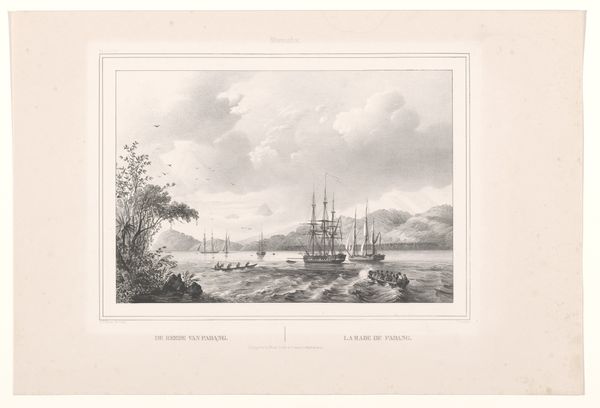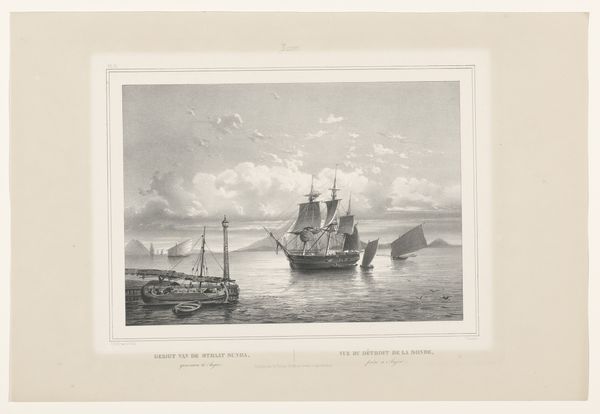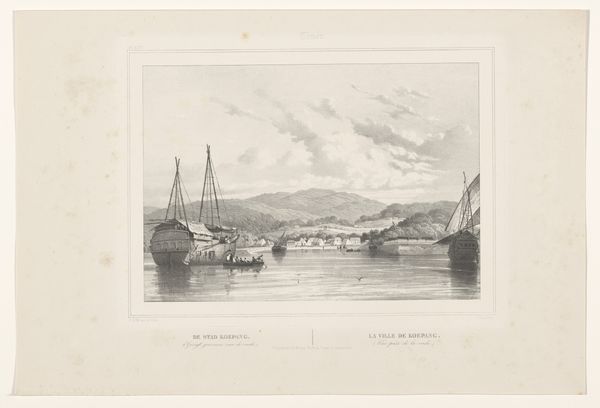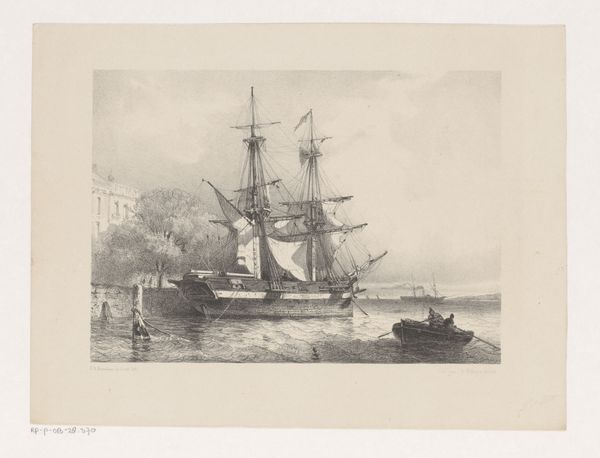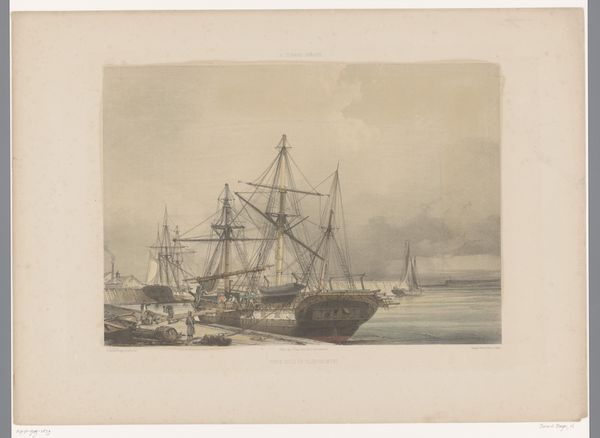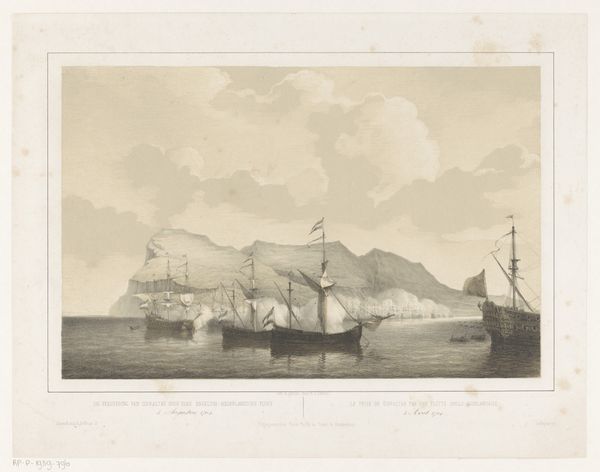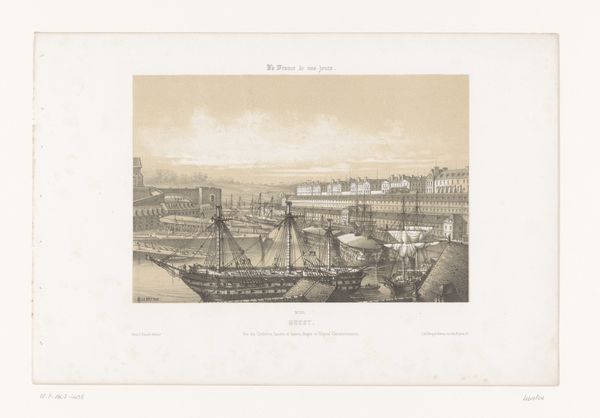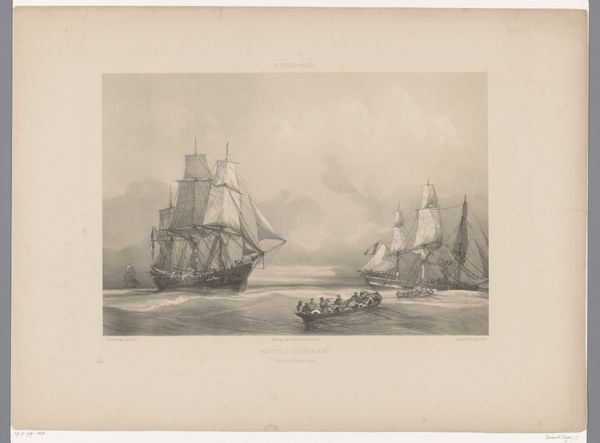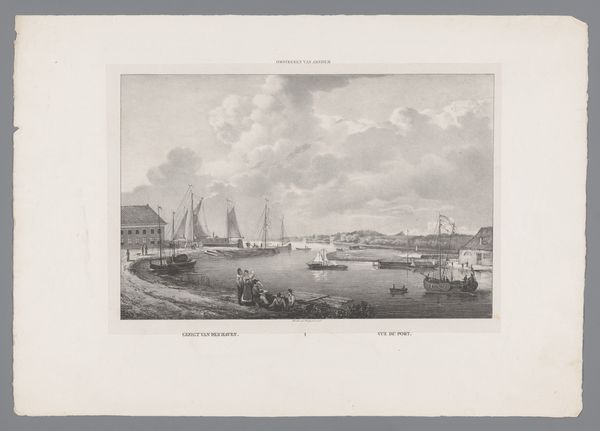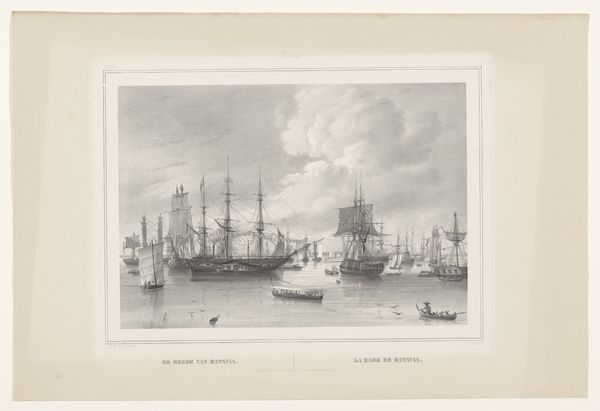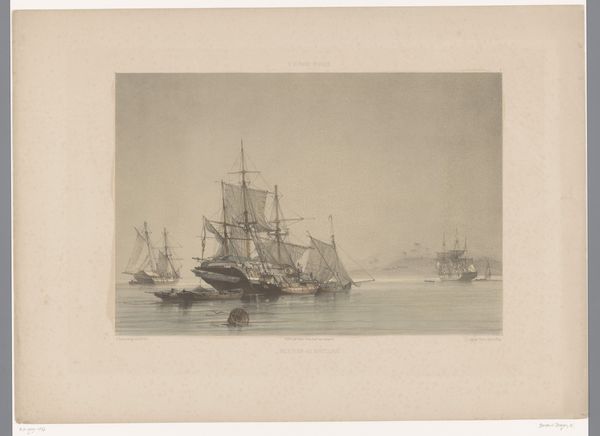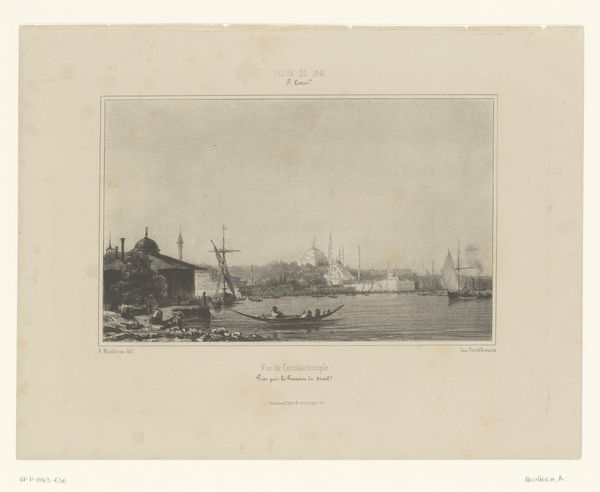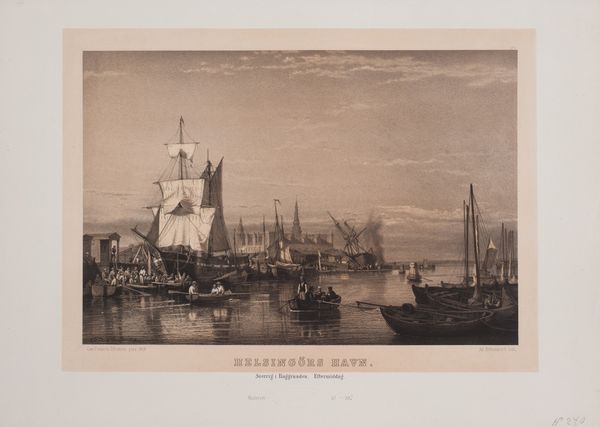
print, engraving
# print
#
landscape
#
romanticism
#
cityscape
#
engraving
Dimensions: height 340 mm, width 510 mm
Copyright: Rijks Museum: Open Domain
Curator: This is Paulus Lauters’ “Gezicht op havenstad Ampenan,” or "View of the Port City of Ampenan," dating from 1843-1845. It's currently held here at the Rijksmuseum and made with engraving. Editor: Immediately, the stillness strikes me. The muted grayscale palette contributes to a tranquil, almost melancholic mood. Curator: Lauters was meticulous. You can almost feel the texture of the paper, and it gives such impressive details regarding the ships' construction as well as the local boats. I see Dutch flags, implying colonial activity, with the ships functioning as economic vehicles and military assertions of Dutch power. Editor: The boats do seem dwarfed, visually minimized in relation to that large ship and also to the implied mountain. I am more curious about the smaller indigenous boats depicted closer to the shore – symbols of the everyday lives, and also modes of sustenance and travel. What stories do they hold? Curator: I find it interesting that Lauters focuses on the activity, but he remains so distant and somewhat romanticizes it. This perspective likely influenced public opinion on overseas expansion. This artistic choice suggests how value was then culturally placed in Europe as central, and places in the margins. Editor: Yes, the composition frames Ampenan almost like a distant promise, ripe for… well, resource extraction and colonial influence. The light and shadows certainly amplify that kind of perspective. And beyond mere landscape, the symbolic meaning lies in how people navigate this place – a commentary of ambition and exploitation as tools for power. Curator: Thinking about production, prints like these had a huge reach. They influenced public imagination and policy relating to trade and colonial governance in the nineteenth century. The dissemination and interpretation is a key point, no? Editor: Precisely. By recognizing how these images circulate, we reveal a dialogue between representation, authority, and how people negotiate symbolic terrain. And perhaps recognize what’s lost in the translation. Curator: Seeing the port city rendered so methodically, you become acutely aware of both technical prowess of Lauters’ practice and broader narrative it served. Editor: Ultimately, the romantic stillness invites consideration, prompting you to investigate a network of material interactions and layered meanings imbued into a seemingly simple view.
Comments
No comments
Be the first to comment and join the conversation on the ultimate creative platform.
